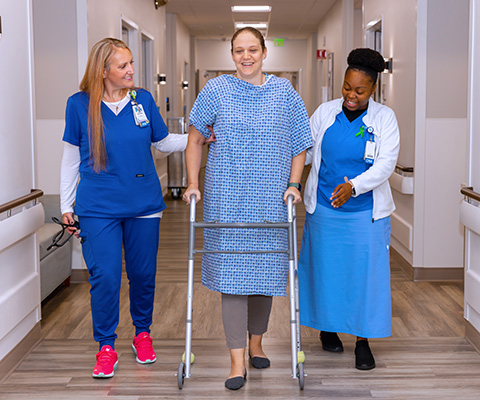
October is National Breast Health Awareness month, which means there’s a lot of talk about the importance of getting regular mammograms. And for good reason!
An annual mammogram is widely known as the best way to detect breast cancer early, when women have the most treatment options and better chances of a favorable prognosis.
But not all mammograms are the same. There are two different primary types - screening mammograms and diagnostic mammograms - and some important differences between the two.
Read on to learn how both exams are vital to saving lives.
Screening mammogram
Diana McEnerney, director of the Lee Health Breast Centers, says that a screening mammogram looks for signs in women who don’t have any problems, and a diagnostic mammogram checks the breast if there have been changes or problems detected.
“A screening mammogram is the most effective screening tool to find breast cancer in most women because the exam can detect masses and calcifications before you or your doctor can feel them,” McEnerney says. “The exam is done yearly in women who have no breast symptoms or changes in their breast exam. All our outpatient breast imaging locations offer the latest screening technology, including 3D mammography screens.”
Experts recommend annual screening mammograms for women who are 40 years or older or for younger women with specific risk factors. Women don’t have to have any signs or symptoms of a breast abnormality in order to receive a screening.
McEnerney says that a 3D screening mammogram is a woman’s best tool for detecting any changes in breast tissue.
“Our screening mammograms are read exclusively by breast imaging radiologists certified in mammography and breast ultrasound, not general radiologists,” she says. “Our team understands how stressful this procedure can be for some patients and treats every patient with the highest quality patient care.”
Diagnostic mammogram
A diagnostic mammogram checks the breast if there have been changes or problems detected. Women will be referred for this type of mammogram if their screening mammogram revealed a possible abnormality or when something is difficult to determine from the screen, McEnerney says.
“Women who were treated previously for breast cancer may also get a diagnostic mammogram,” McEnerney explains. “Diagnostic mammograms are also recommended if a woman has a breast mass or other breast change found during a breast self-exam or by their doctor.”
Mammograms can be 2-D or 3-D, depending on what the doctor is looking for:
- A 2-D mammogram looks at the breast from different angles: one from the top and one from the side. Those views cover as much of the breast tissue as possible.
- A 3-D mammogram uses the same positioned views but takes thin slices through the breast tissue instead of just one X-ray. 3D mammograms show clearer results and usually have better sensitivity and specificity. These images can reveal any potential tumors or abnormalities. is the latest technology for breast cancer screening. It can better differentiate a cancer from overlying glandular tissue. This increases cancer detection and decreases chances of a “false positive.”
Ask your doctor which mammogram is right for you.
And don’t put off learning when you should begin routine mammogram testing, McEnerney cautions.
A recent report showed only about 65 percent of women above the age of 40 had a mammogram within the past two years, according to the Centers for Disease Control and Prevention.
Takeaway: Mammograms are essential, important, and potentially life-saving. Talk with your doctor about when to start mammography screening sooner than later.
Use MyChart to schedule a screening today, or if you are not a MyChart user call 239-236-4893.
Reach Out Today
-
Women's Health
Navigate women's health services across our health-system. Lee Health's hub for women's health in SWFL.


